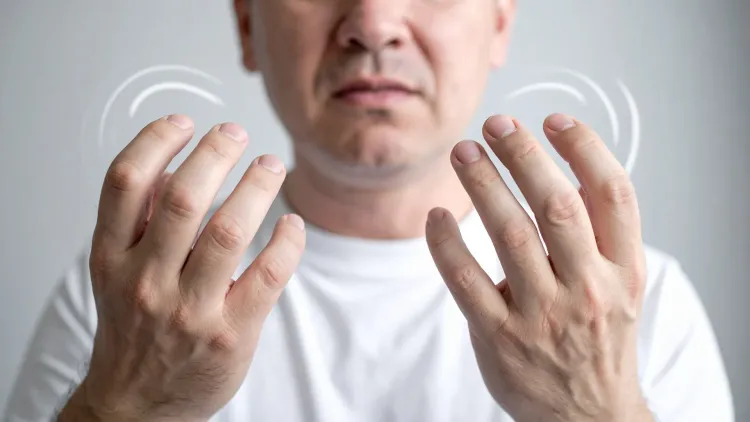Have Japanese Scientists Discovered Hidden Immune 'Hubs' Driving Joint Damage in Arthritis?

Synopsis
Key Takeaways
- Immune 'hubs' play a critical role in joint damage related to RA.
- Stem-like Tph cells reside in these hubs and can activate B cells.
- Effector Tph cells leave the hubs to cause inflammation.
- This discovery could lead to innovative treatment strategies.
- Understanding Tph cell dynamics is essential for effective RA management.
New Delhi, Aug 18 (NationPress) A research team from Japan has uncovered concealed immune 'hubs' that significantly contribute to joint damage in individuals suffering from rheumatoid arthritis (RA). This autoimmune disorder affects millions globally, often leading to severely compromised quality of life for patients. Alarmingly, nearly one-third of those affected do not respond adequately to current treatment options.
The researchers from Kyoto University found that peripheral helper T cells (Tph cells)—a crucial category of immune cells linked to RA—exist in two distinct forms: stem-like Tph cells and effector Tph cells. The stem-like Tph cells are located within specialized immune structures known as tertiary lymphoid structures in inflamed joints, where they proliferate and activate B cells.
Some of these stem-like Tph cells transition into effector Tph cells that exit these hubs and incite inflammation. The persistent presence of effector Tph cells may elucidate the ongoing inflammation observed in some patients, even with ongoing treatment.
Targeting these stem-like Tph cells at their origins could unveil a novel therapeutic avenue, potentially offering better symptom management and enhanced quality of life for individuals battling RA, as stated in their findings published in the journal Science Immunology.
First author Yuki Masuo from Kyoto remarked, "By employing advanced analytical techniques that have emerged recently, we have revealed a new facet of immune response at the sites of joint damage in RA."
He added, "Since stem-like Tph cells possess the ability to both self-renew and differentiate, they may signify a fundamental cause of the disease."
Building on previous research highlighting the accumulation of Tph cells in RA-affected joints contributing to inflammation, the team scrutinized immune cells from inflamed joint tissues and blood samples of RA patients through a comprehensive method known as multi-omics. This approach integrates various biological data types to portray the dynamic behavior of Tph cells in joint tissues impacted by RA.
The findings disclosed that the majority of stem-like Tph cells reside within these immune hubs, where they closely interact with B cells.
Furthermore, cultivating stem-like Tph cells alongside B cells in laboratory settings revealed that this interaction not only facilitates the development of stem-like Tph cells into effector Tph cells but also activates B cells.
Conversely, effector Tph cells are located outside the hubs, interacting with other immune cells, such as macrophages and cytotoxic (killer) T cells, which further promote inflammation.
Overall, this study illuminates the existence of two distinct types of Tph cells with varied functions in inflamed joint tissue. Stem-like Tph cells thrive in immune hubs, where they self-renew and assist in B cell activation. Some of these mature into effector Tph cells that exit these immune hubs and induce inflammation.









